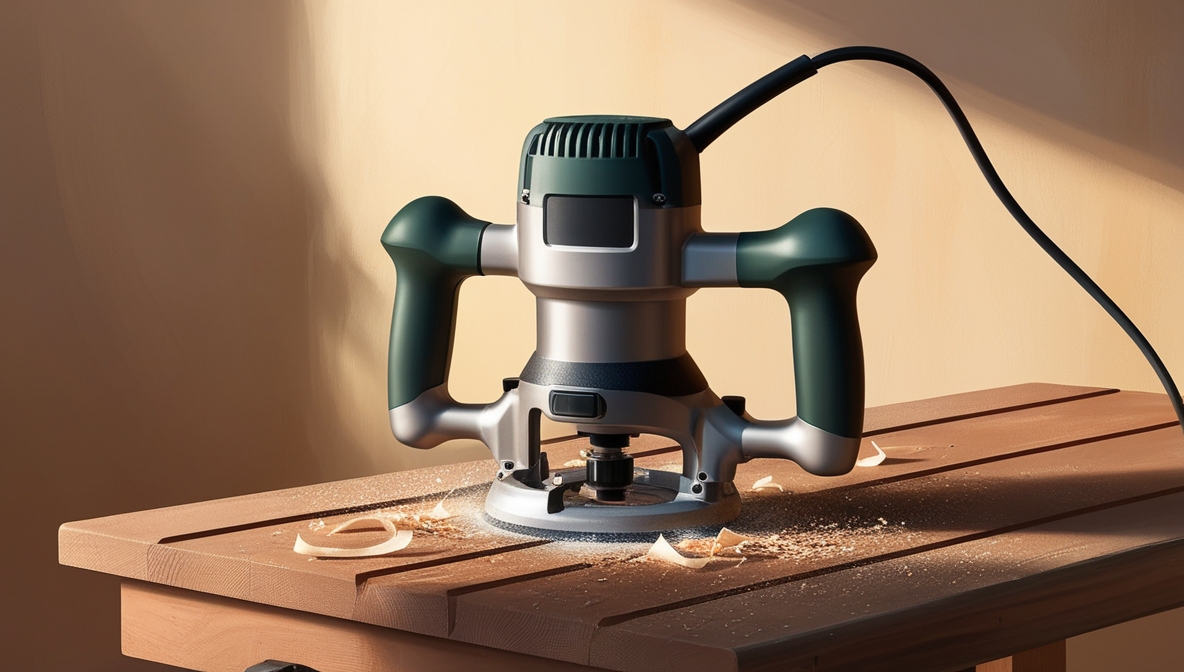A wood router is one of the most versatile tools in any woodworker’s arsenal. From creating intricate designs to crafting precise joints, this tool is essential for both hobbyists and professionals. Understanding how to use a wood router effectively can make all the difference.
Read about Wood Lathe here!
What is a Wood Router?
A wood router is a power tool used for hollowing out an area in a piece of wood. It is commonly used for edging, shaping, and carving designs. The router tool operates with a spinning bit that cuts through the wood, allowing for precision and creativity in woodworking.
Modern routers are versatile and come in different styles, such as plunge routers and fixed-base routers. For more advanced projects, many woodworkers now turn to a woodworking CNC machine, which automates the routing process for intricate designs.
Types of Wood Routers
- Fixed-Base Routers
These are ideal for edge work and precision cuts. They are user-friendly and perfect for beginners. - Plunge Routers
Plunge routers allow you to start cutting in the middle of the wood, making them great for detailed inlay work or grooves. - Compact Routers
Compact routers are lightweight and portable, ideal for smaller projects or touch-ups. - Dewalt Woodworking Router
Dewalt woodworking routers are popular for their durability and power. These routers come in various models, catering to beginners and professionals alike.
Applications of a Wood Router
A wood router tool is incredibly versatile and can be used for a variety of tasks:
- Edging: Create decorative edges on tables, doors, or cabinets.
- Grooving: Cut grooves for joints or accents in your woodworking projects.
- Lettering and Carving: Add personalized touches to your work by carving names or intricate patterns.
- Dovetail Joints: Use a router woodworking setup to create strong, precise dovetail joints.
- Template Work: Follow templates to replicate shapes or designs consistently.
For those looking to take their projects to the next level, a woodworking CNC machine can handle these tasks with unmatched precision and efficiency.
How to Use a Wood Router
Using a wood router requires some preparation and practice. Follow these steps for optimal results:
- Choose the Right Bit
Select the appropriate bit for your project. Options include straight bits, flush-trim bits, and decorative bits. - Set the Depth
Adjust the router depth based on the desired cut. Fixed-base routers require manual adjustments, while plunge routers allow for on-the-fly changes. - Secure the Workpiece
Use clamps or a woodworking table to hold the wood securely. Bar clamps are especially useful for this. - Move the Router Correctly
Move the router tool in the opposite direction of the bit’s rotation to ensure a clean cut. - Practice Safety
Always wear safety glasses, use a dust mask, and keep your hands clear of the spinning bit.
Advantages of Using a Wood Router Tool
A wood router tool offers several benefits that enhance your woodworking projects:
- Precision: Create detailed designs and accurate cuts with ease.
- Versatility: Handle a wide range of tasks, from shaping edges to carving intricate patterns.
- Efficiency: Save time on repetitive tasks like edging or grooving.
- Scalability: With a woodworking CNC machine, you can produce complex designs in bulk.
Choosing Between a Wood Router and a Wood CNC Machine
While a manual wood router tool is perfect for many woodworking projects, a wood CNC machine offers advanced capabilities for professionals or those tackling intricate designs.
- Manual Wood Router
- Best for one-off projects or custom work.
- Lower upfront cost.
- Requires hands-on operation.
- Woodworking CNC Machine
- Automates complex designs and repetitive tasks.
- Ideal for large-scale production.
- Higher initial investment but saves time in the long run.
Dewalt Woodworking Router: A Trusted Choice
The Dewalt woodworking router is a favorite among woodworkers for its quality and reliability. Features often include:
- Adjustable speed settings for better control.
- Durable construction for long-term use.
- Compatibility with various router bits and accessories.
Tips for Getting the Most Out of Your Router
- Start Slow
Practice on scrap wood to familiarize yourself with the router’s speed and control. - Keep Bits Sharp
Dull bits can damage your workpiece and reduce the router’s efficiency. - Use Templates
Templates ensure consistency and accuracy, especially for repetitive tasks. - Maintain Your Router
Clean your router regularly, and inspect the motor and bits for wear. - Invest in a Quality Router Table
A woodworking table provides stability and precision for complex tasks.
Conclusion
A wood router is an indispensable tool for anyone passionate about woodworking. From simple edging to complex carvings, this tool opens up a world of possibilities. The key is to understand its applications and practice regularly. With quality options like the Dewalt woodworking router and careful attention to technique, you can create stunning projects that showcase your craftsmanship.
